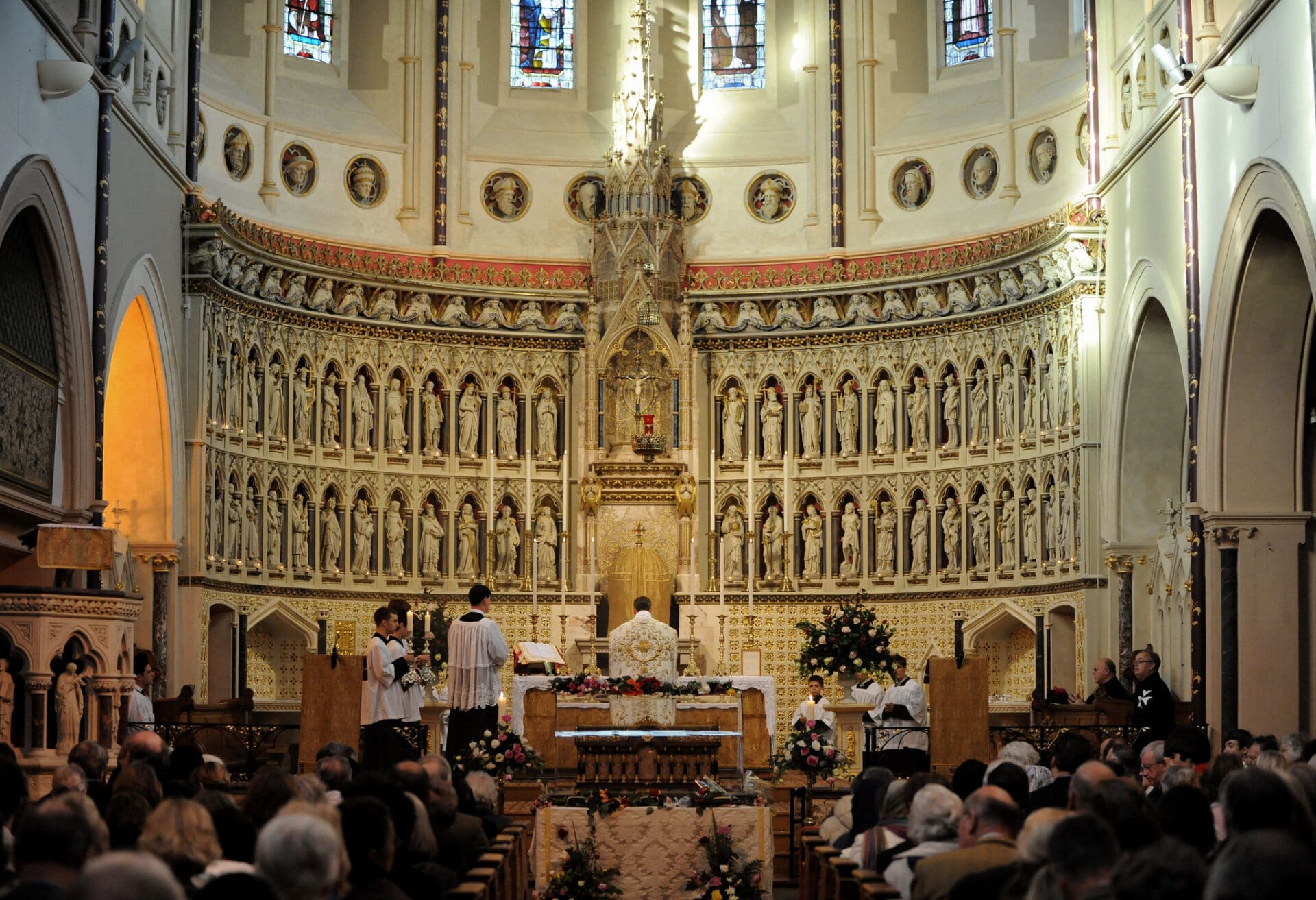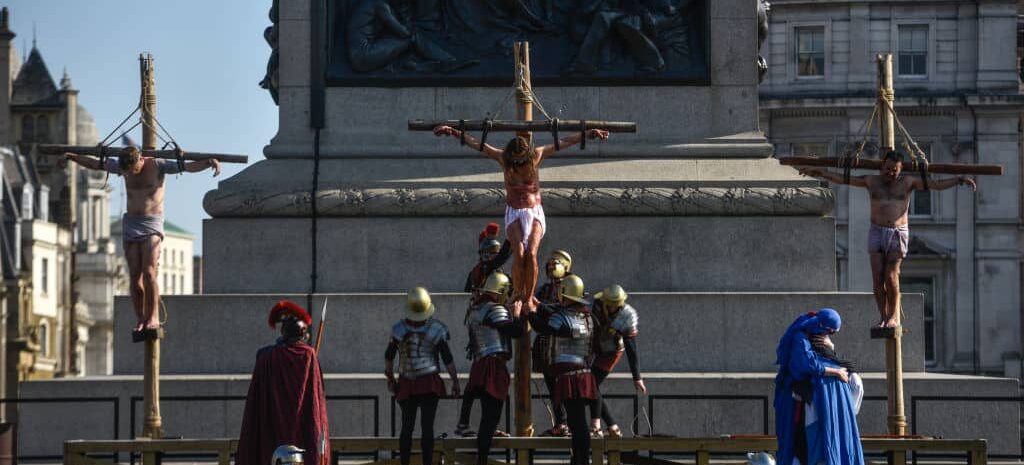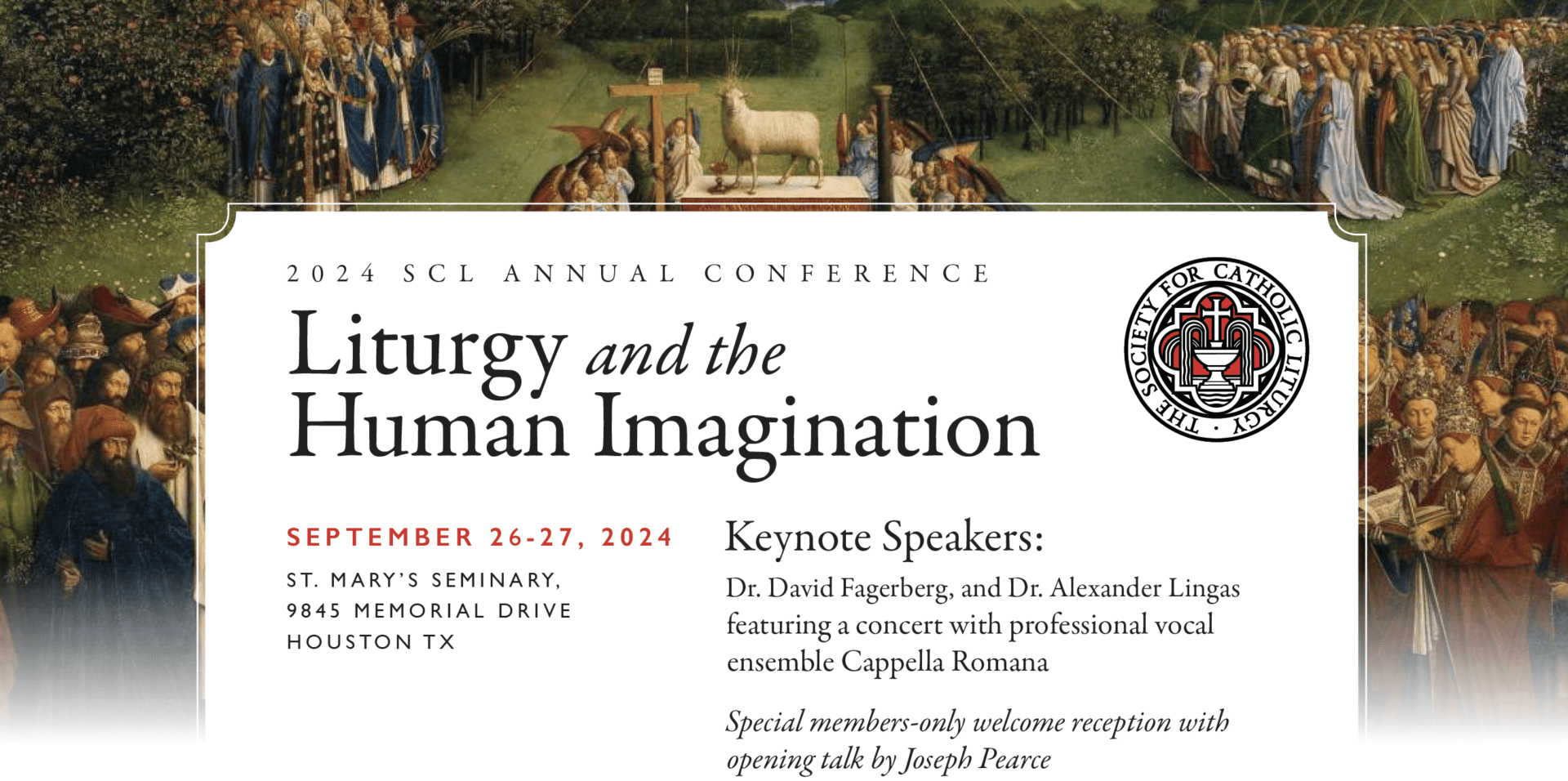Early reactions to Pope Francis’s July 16, 2021 liturgical initiative Traditionis Custodes and its accompanying Letter, have been quick and plentiful. In time, more detailed study will pursue broader implications of these documents on a variety of issues—the role and authority of the papacy, the right interpretation of Vatican II, the place of mercy in the administrative life of the Church, and the relation of Gospel, Church, liturgy, and culture, among others. Here we aim to situate Traditionis Custodes, and its key features, in their proper historical context. What follows offers the historical background on relevant liturgical initiatives and priorities of Popes Paul VI, John Paul II, and Benedict XVI. A subsequent essay will address pastoral questions and challenges raised by this new liturgical initiative of Pope Francis.
Why Was the Old Mass Permitted Again Anyway?
The Second Vatican Council’s liturgy constitution, Sacrosanctum Concilium (1963), called for “a general restoration of the liturgy itself” (§21) leading to a revision of the Church’s liturgical books (§25). Pope Saint Paul VI almost immediately established a task force of bishops and experts, the Consilium, to do the work. The revised liturgical books began to be available in Latin half a dozen years later, with vernacular translations to follow. The first edition of the revised Missale Romanum was promulgated in 1970.[1]
Under Paul VI, the prior Roman Missal could no longer be used once the revised Missal became available. Use of that prior Missal then became a magnet and symbol for those who became seriously opposed to developments unfolding in the Church after the council. Notable among them (i) was Archbishop Marcel Lefebvre and members of the Society of Saint Pius X (SSPX) who rejected Vatican II as a betrayal of true Catholic tradition, but (ii) there were other Catholics who shared that assessment of the council but did not affiliate with the SSPX. But this hardly exhausts the reasons Catholics in the postconciliar era found attraction in that historic form of worship. A more detailed analysis would include (iii) those Pope Paul VI early on termed “the malcontents,”[2] disturbed in their devotional practices at Mass, (iv) persons who considered it a unique cultural artifact (as those who requested the 1971 indult for England and Wales) and (v) some simply moved by nostalgia.
The list includes two other constituencies, to be discussed later in the essay: (vi) those who accept the council in general but judge the liturgical reform flawed because it disrespected “objective liturgical Tradition” and proceeded more by innovation than organic development, and (vii) those whose theocentric liturgical spirituality was disregarded and offended by continuing “abuses” in postconciliar liturgical celebrations.[3] Church documents after the council regularly critiqued abuses attributable to presiders ignoring liturgical norms, a sense of open-ended creativity, unauthorized experimentation, personal and arbitrary innovations, and so on—none of it, as those documents endlessly repeated, intended or authorized by the council, the Consilium, or the pope.
Mindful especially of this last group (vii), Pope Saint John Paul II decided in 1984 to reauthorize limited use of the 1962 Missal. It was a shepherd’s act of mercy toward a portion of the flock, as well as an effort to preserve the unity of the whole, for this single act aimed at once to acknowledge and provide for the liturgical spirituality of Catholics drawn to the prior Missal, and thereby to lessen their attraction to the separatist SSPX where the old Mass was also celebrated.
John Paul II took this step after the Vatican surveyed episcopal conferences in 1980 to learn about the reception of the liturgical reforms and any remaining difficulties or resistance to it. Based on the responses, the Congregation for Divine Worship reported in its 1984 letter, Quattuor Abhinc Annos (“Four years ago”), that the “problem” of some Catholics still “holding to the so-called ‘Tridentine’ rite was almost completely solved.” In a remarkable non-sequitur the next sentence began, “Since, however, the same problem continues . . .” with the letter then proceeding to lay out the specific and limited conditions under which the pope gave diocesan bishops the faculty to use an indult to allow celebrations of Mass with the preconciliar Missal. A few weeks later the Pro-Prefect of the Congregation described Quattuor Abhinc Annos as motivated by “considerations of compassion and pluralism”[4]—and also, it seems clear, unity.
In 1988, Archbishop Lefebvre ordained four SSPX priests as bishops without papal mandate, thus incurring automatic excommunication. In response John Paul II issued his motu proprio, Ecclesia Dei. While critiquing the Society’s disobedience to the Roman Pontiff and misunderstanding of tradition, and defending the legitimacy of Vatican II developments (§3-4), he also decreed that “respect must everywhere be shown for the feelings of all those who are attached to the Latin liturgical tradition, by a wide and generous application” of the provisions of Quattuor Abhinc Annos, which he reaffirmed but did not expand (§6.c). He emphasized his intent to “facilitate their ecclesial communion” (§5.c), and offered a theological framework for the kind of communion he envisioned by affirming the Church’s Spirit-inspired “beauty of unity in variety,” a “blended ‘harmony,’” mentioning in particular “a diversity of charisms [and] traditions of spirituality” (§5.a).
Cardinal Ratzinger supported this outreach, but as the years passed came to think that bishops failed to be generous, as encouraged, in granting Quattuor Abhinc Annos’ permissions, instead remaining intolerant toward Catholics drawn to the old Mass. (Again, recall the complex range of motives, sketched above as (i) to (vii), connecting people with that Missal.) As Pope Benedict XVI, with his 2007 motu proprio, Summorum Pontificum, he chose to legislate a wider permission for use of the prior liturgical books in local dioceses, designating such usage the “extraordinary form” of the Roman Rite, with the Church’s postconciliar liturgy remaining as (we might say: reaffirmed as) the “ordinary form”, which most Catholics would continue to celebrate as usual. Summorum Pontificum‘s multiple aims included putting in place a symbol to demonstrate the unity and continuity of the Church before and after the council,[5] bringing some peace to a contentious liturgical landscape, gradually amending the abuses that Benedict saw and Francis also deplores, accommodating what he considered the legitimate spiritual aspirations of a segment of faithful Catholics, and through all this to foster liturgical inclusion and ecclesial unity.[6]
The means and engine Benedict established to accomplish these goals was the mutual enrichment of the ordinary and extraordinary forms. Article 5 of Summorum Pontificum envisioned this taking place typically in diocesan parishes, those where a stable group of Catholics desired to worship in the form of the preconciliar Mass. Their pastors were to “willingly accede” to their request, providing Mass in the extraordinary form, presumably to be offered by a priest of the parish who had become competent to do so. Masses could be scheduled on weekdays or Sunday.
Imagine pastors alternating both schedules, or celebrating the extraordinary form only on weekdays, so that these parishioners regularly celebrated Mass in both forms with a priest of their parish presiding. The result would be a cohort throughout the diocese of priests and people familiar by personal experience with the distinctive characteristics, strengths, and weaknesses of each form as celebrated.
This would position them—not so much popes, bishops, or liturgical scholars but them, ordinary Catholics, clergy and lay—to be the prime contributors to mutual enrichment serving liturgical reconciliation—if they had a mind to, that is, if they did what Summorum Pontificum allowed in a manner faithful to Pope Benedict’s intent in issuing it: seeking liturgical reconciliation, not creating entrenched liturgical enclaves. If practiced in this spirit, then through “the intimate sense of spiritual realities which they [would] experience” (Dei Verbum, §8) in these varied celebrations, they would come to discern how certain elements in each form, if adopted or adapted into the other, might enrich that other form. The process would take place little by little, over time, even over generations, with local customs arising occasionally, not by imposition but by pastoral discovery in a spirit of gift-sharing, with gradual sifting and discernment, all ultimately under episcopal moderation exercised not intrusively but with judicious patience.
This was Benedict’s vision of lay empowerment, clerical service, and liturgical change that is slow and grassroots rather than mandated and top-down. It is also quite idealistic, assuming parish priests with time, ability, and means to learn to celebrate the extraordinary form with competence and grace, and train a choir to sing Gregorian chant well. So Pope Benedict pragmatically added a back-up provision in Summorum Pontificum (Art. 10) giving bishops another way to provide the extraordinary form: by erecting personal parishes dedicated to use of that form, to serve Catholics from multiple parishes.
Benedict knew the dangers of this option but kept it anyway. Without it, Catholics who sought that form of Mass might not receive access to it, with overworked parish priests, some responsible for multiple parishes, being hard put to provide it. But that provision, which became commonly used, entailed a likelihood of continuing liturgical differentiation by limiting the number of diocesan priests familiar with the extraordinary form and segregating extraordinary form Catholics from ordinary form parishes and parish life, thus reducing opportunities for liturgical and ecclesial reconciliation to develop through contact. Article 10 was the Achilles’ heel of Summorum Pontificum, working at cross-purposes to its own goals and apparently contributing to its undoing—unless Pope Francis simply did not give it time to work.
To continue reading, please see Church Life Journal
Notes:
[1] Sacred Congregation for Divine Worship, Decree, Celebrationes Eucharisticae; in Documents on the Liturgy 1963–1979: Conciliar, Papal, and Curial Texts (Collegeville, MN: Liturgical, 1982), Document 213.
[2] Paul VI, General Audience on August 20, 1969; Documents on the Liturgy, 46, at paragraph 493.
[3] The word “abuse” carries strong emotional overtones in English, from use in such phrases as “sexual abuse” and “child abuse.” In a liturgical context it simply indicates a violation of a liturgical norm, whether more serious (sacrilege with the Blessed Sacrament) or less so (a priest breaking the host while reciting the institution narrative).
Also, another group for this list is the Priestly Fraternity of Saint Peter (FFSP), “a clerical Society of Apostolic Life of Pontifical Right, canonically erected by Pope St. John Paul II in 1988. Their priests serve in apostolates across the world, with the faithful celebration of the traditional Mass and Sacraments (Extraordinary Form of the Roman Rite) at the center of their charism” (from their website). Assessing the future of the Fraternity is beyond the scope of this essay.
[4] As reported in Aelred Tegels, “Chronicle: A Minisynod on Liturgical Reform,” Worship 59 (1985): 72–78, at 77.
[5] It is intriguing that Archbishop Lefebvre’s celebration of the old Mass was for him a symbol of rejection of the council and an affirmation of rupture between the Church before and after, while Pope Benedict posited continued use of the prior Missal as a symbol and affirmation of ecclesial and liturgical continuity before and after the council.
[6] See William H. Johnston, Care for the Church and its Liturgy: A Study of Summorum Pontificum and the Extraordinary Form of the Roman Rite (Collegeville, MN: Liturgical, 2013), esp. Chapter 3, “The Multiple Purposes of Summorum Pontificum,” for more detail on this point.



